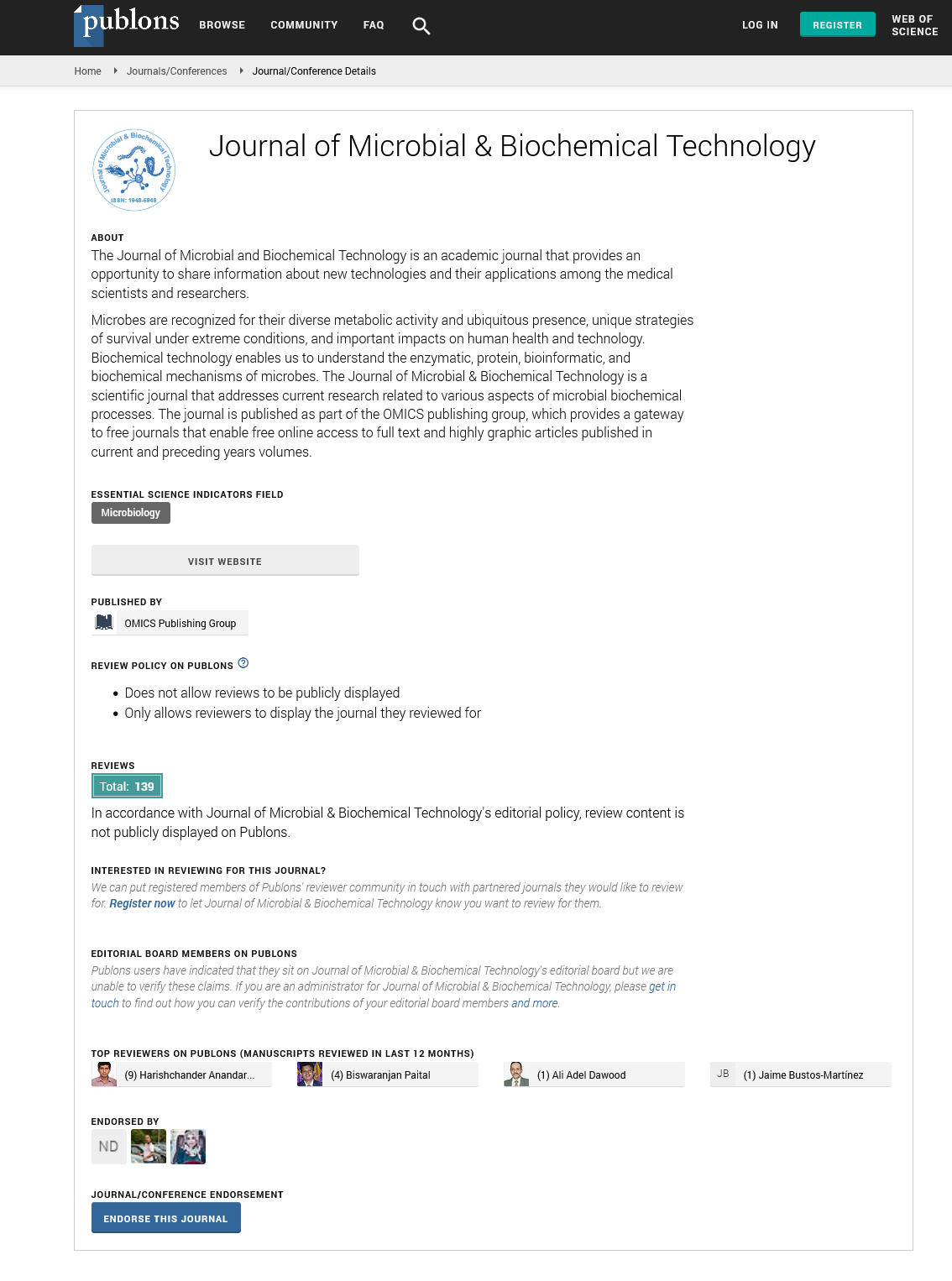Indexed In
- Academic Journals Database
- Genamics JournalSeek
- Academic Keys
- JournalTOCs
- China National Knowledge Infrastructure (CNKI)
- Scimago
- Access to Global Online Research in Agriculture (AGORA)
- Electronic Journals Library
- RefSeek
- Directory of Research Journal Indexing (DRJI)
- Hamdard University
- EBSCO A-Z
- OCLC- WorldCat
- SWB online catalog
- Virtual Library of Biology (vifabio)
- Publons
- MIAR
- University Grants Commission
- Geneva Foundation for Medical Education and Research
- Euro Pub
- Google Scholar
Useful Links
Share This Page
Journal Flyer

Open Access Journals
- Agri and Aquaculture
- Biochemistry
- Bioinformatics & Systems Biology
- Business & Management
- Chemistry
- Clinical Sciences
- Engineering
- Food & Nutrition
- General Science
- Genetics & Molecular Biology
- Immunology & Microbiology
- Medical Sciences
- Neuroscience & Psychology
- Nursing & Health Care
- Pharmaceutical Sciences
Perspective - (2025) Volume 17, Issue 1
Plant Pathogens under Biological Control using Beneficial Microbes: Mechanisms and Applications
Ullah Chhana*Received: 28-Aug-2023, Manuscript No. JMBT-23-22872 ; Editor assigned: 01-Aug-2023, Pre QC No. JMBT-23-22872 (PQ); Reviewed: 18-Aug-2023, QC No. JMBT-23-22872 ; Revised: 03-Jan-2025, Manuscript No. JMBT-23-22872 (R); Published: 13-Jan-2025
Description
Plant pathogens pose a significant threat to agriculture, causing substantial crop losses and economic damage worldwide. Traditional methods of controlling these pathogens often involve the use of chemical pesticides, which can have adverse effects on the environment, human health, and non-target organisms. In recent years, there has been a growing interest in alternative, more sustainable methods of plant pathogen control, with a focus on harnessing the power of beneficial microbes. This approach, known as biological control, relies on the use of beneficial microorganisms to suppress plant pathogens. In this article, we will explore the mechanisms behind biological control and its various applications in agriculture.
Mechanisms of biological control
Antagonism: One of the fundamental mechanisms underlying biological control involves the antagonistic activities of beneficial microbes against plant pathogens. Beneficial microbes, such as certain strains of bacteria and fungi, produce antimicrobial compounds that inhibit the growth and development of pathogenic organisms. For example, some bacteria secrete antibiotics or lytic enzymes that specifically target and kill pathogenic bacteria or fungi.
Competition for resources: Beneficial microbes can out compete plant pathogens for essential resources such as nutrients and space. By colonizing the plant's root zone or leaf surface, these beneficial microorganisms create an environment that is less hospitable to pathogenic invaders. They consume available nutrients, leaving less for the pathogens, and also physically block pathogen attachment sites on plant surfaces.
Induction of plant defense mechanisms: Some beneficial microbes have the ability to stimulate a plant's innate defense mechanisms. They can trigger the production of pathogenesisrelated proteins, phytoalexins, and other defense compounds in plants. This induced resistance makes the plant more resilient to pathogen attacks. In essence, beneficial microbes act as "vaccines" for plants, priming them to fend off potential invaders.
Nutrient mobilization: Certain beneficial microbes have the capacity to solubilize essential nutrients, such as phosphorus and iron, from the soil, making them more available to plants. This enhanced nutrient uptake not only promotes plant growth but also strengthens the plant's ability to resist pathogen infection.
Applications of biological control
Disease suppression in agriculture: The primary application of biological control is in agriculture, where it offers a sustainable and eco-friendly means of managing plant diseases. Various biopesticides and biofungicides, consisting of beneficial microbes, are now commercially available. These products can be applied to crops to protect them from a wide range of fungal, bacterial, and viral pathogens.
Post-harvest disease management: Biological control is also crucial in post-harvest disease management. Beneficial microbes can be used to control pathogens that cause spoilage and decay during storage and transportation. This helps extend the shelf life of harvested produce and reduces food waste.
Organic farming: Organic farming practices rely heavily on biological control methods to manage pests and diseases without the use of synthetic chemicals. Beneficial microbes play a central role in maintaining the health and productivity of organic crops.
Bioremediation: Beyond agriculture, biological control has applications in bioremediation. Beneficial microbes can be used to clean up soil contaminated with plant pathogens, pesticides, and other pollutants, restoring environmental health.
Integrated Pest Management (IPM): Biological control is an integral component of IPM strategies. By incorporating beneficial microbes into a comprehensive pest management plan, farmers can reduce their reliance on chemical pesticides and minimize the risk of developing pesticide resistance in target pests.
Enhancing soil health: Beneficial microbes can improve soil structure, fertility, and overall health. By fostering a beneficial microbial community in the rhizosphere (the area around plant roots), plants can access more nutrients and are less susceptible to soil-borne pathogens.
Citation: Chhana U (2025) Plant Pathogens under Biological Control using Beneficial Microbes: Mechanisms and Applications. J Microb Biochem Technol. 17:641.
Copyright: © 2025 Chhana U. This is an open-access article distributed under the terms of the Creative Commons Attribution License, which permits unrestricted use, distribution, and reproduction in any medium, provided the original author and source are credited.

